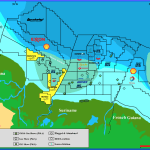Latin America’s Palm Oil Surge: A Challenge for Indonesia’s Agribusiness

The Battle for Green Gold
eyesonindonesia
Indonesia and Malaysia have long reigned supreme in the palm oil industry, their lush plantations stretching across the equator. But now, a new contender emerges from the fertile soils of Latin America. As palm oil production in this region gains momentum, Indonesia faces both competition and opportunity. Let’s explore how this shift impacts Indonesia’s agribusiness and what lies ahead.
1. The Rise of Latin American Palm Oil
A New Frontier
Latin America, with its sprawling landscapes and tropical climate, is making waves in palm oil production. Countries like Colombia and Guatemala have become formidable players, churning out nearly double the oil per hectare compared to their Southeast Asian counterparts. But it’s not just about quantity; it’s about sustainability. Latin American farmers have learned from the mistakes of Indonesia and Malaysia, focusing on traceable, eco-friendly supply chains. With Europe’s deforestation rules looming, Latin America’s palm oil is poised to conquer new markets.

2. Indonesia’s Agribusiness at a Crossroads
Challenges and Opportunities
- Productivity Pressures: Indonesia’s aging oil palm trees are becoming less productive. Labor shortages and stricter land-clearing regulations hinder replanting efforts. To maintain competitiveness, Indonesia must rejuvenate its plantations.
- Sustainable Practices: The path forward lies in sustainable practices. By adopting satellite monitoring and eco-conscious methods, Indonesia can enhance yield while safeguarding its forests.
- European Demand: As Latin America gains traction, Indonesia faces intensified competition in Europe. The battle for market share will be fierce, but Indonesia can leverage its experience and scale to stay relevant.
- Balancing Profit and Planet: Indonesia must strike a delicate balance. Profitable agribusiness can coexist with environmental stewardship. Responsible palm oil production is the key.
3. Outlook: A Shared Destiny
Collaboration and Adaptation
Indonesia need not view Latin America as a threat; instead, it’s an ally in the quest for sustainable palm oil. Here’s the outlook:
- Collaboration: Indonesia and Latin America can exchange knowledge, learn from each other’s successes, and jointly address global challenges.
- Innovation: Research and development will drive Indonesia’s future. Improved varieties, disease resistance, and efficient cultivation techniques are essential.
- Certification: Certifying sustainable practices ensures Indonesia’s palm oil remains competitive. Transparency builds trust with consumers.
- Global Leadership: By embracing sustainability, Indonesia can lead the way. Together, we can nourish the world while preserving our planet.
4. A Greener Horizon
Seeds of Change
As Latin America’s palm oil industry blossoms, Indonesia stands at a crossroads. Will it cling to tradition or embrace transformation? The answer lies in collaboration, innovation, and a shared commitment to a greener future. Let us sow the seeds of change, cultivating not just oil palms but hope for generations to come.
Remember, the true harvest is not just oil—it’s resilience, responsibility, and renewal.
Sources:









